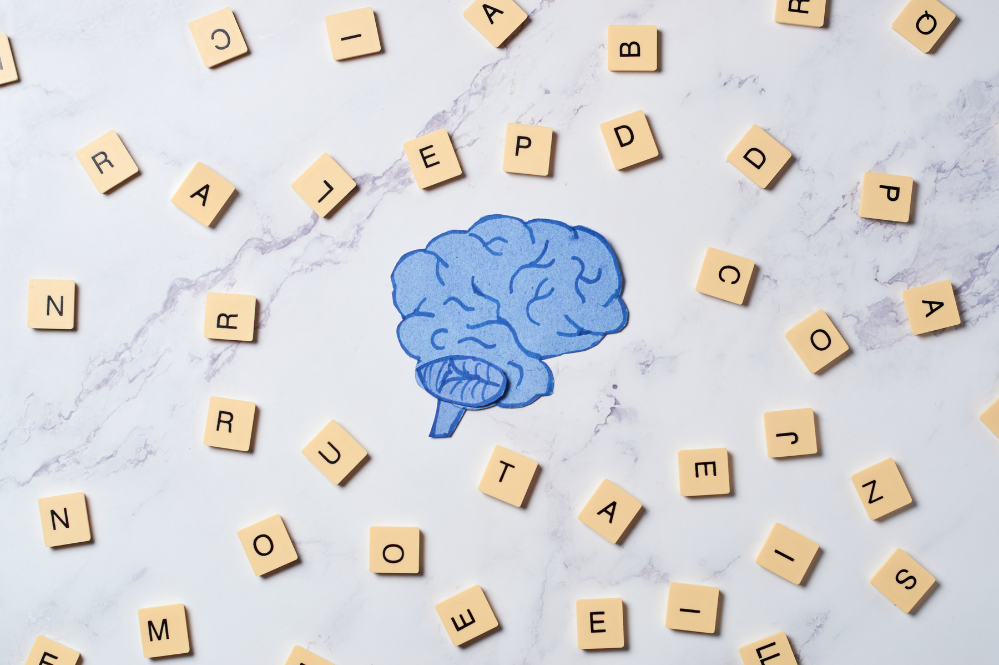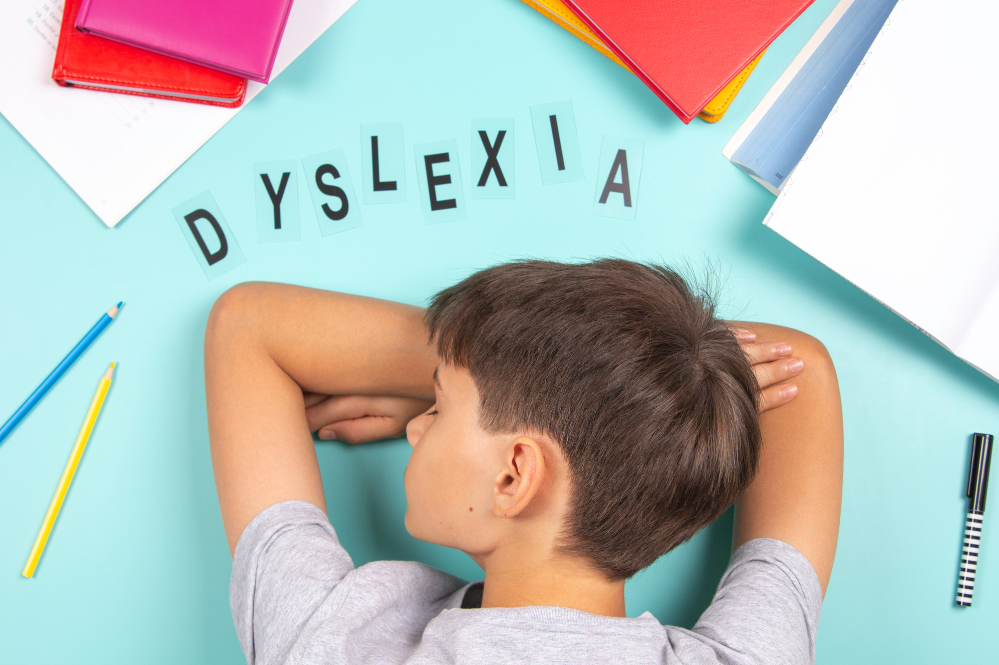How do we learn to read?Can you remember learning to read?
If it was an unpleasant struggle, you are more likely to recall the experience. If you learnt to read easily, you probably won’t remember much about it. Perhaps you can remember some of the early books which were read to you or some that you practised with? For most people, the process of becoming a reader is a blur – it just happened, something just clicked and that was it – you were a reader. You didn’t need to sound out any more and after seeing a word once, you could remember it next time you saw it. Imagine that not happening for you. Imagine not being able to sound words out, not being able to recognise a word again even though you have just read it accurately. Imagine reading never being an enjoyable experience. At Jumpstarting™ Learning Skills, we maintain that everyone, even those with dyslexia, can become pretty fluent readers provided they are taught in a way that matches how they learn best. How do we become readers? A theory put forward by Linnea C. Ehri, in the Journal of Research in Reading 1995 has become one of the most recognised and is frequently referred to. She describes four stages in learning to read:
Neuroscience gives us more information about what is actually happening inside the brain as we read. Through fMRI scans, we can see the different parts of the brain that are activated when we are reading. These show that three processes are going on:
The areas of the brain involved in these processes are connected by complex networks. So how do we teach students to read? Ehri outlines the necessary knowledge and skills that children need to learn:
The theory is that good quality phonics teaching focuses on letter/sound correspondence and once a student has learnt to decode a word and then seen it and repeated it several times, connections are made between the sound and way it looks and the word becomes stored in the Visual Word Form Area (Dehaene calls it the Brain’s Letterbox). The importance of being able to store a visual representation is made absolutely clear throughout all significant documents, schemes, research etc. For example, in the UK Guidelines Letters and Sounds – Principles and Practice of High-Quality Phonics 2007 it states: ‘It must always be remembered that phonics is the step up to word recognition. Automatic reading of all words – decodable and tricky – is the ultimate goal.’ The importance of visual memory has been known for a long time: ‘If a student does not have visual memory, (s)he is never going to learn to read.’ Eleanor Johnson 1959 So why are some students still not learning to read? Despite good quality phonics programmes, excellent teaching and hard work on the part of the student and everyone involved, around 10% to 20% of students still do not become fluent readers. The process described by Ehri takes place naturally in most brains – parents, teachers and children are thrilled to see they have ‘got it’, they have ‘taken off’ and just know the word automatically when they see it again. The problem is, schools are using a model that reflects the way most brains learn. Research (e.g. that carried out by Shaywitz), shows that the brains of people with dyslexia don’t make the same connections in the brain in the same way that fluent readers do. People with dyslexia have difficulty with:
So we can see that there is a mismatch here between the skills we are told a learner needs to have and the way a brain with dyslexia is operating. Synthetic phonics programmes reflect the way most brains learn to read; they do not reflect the way the brain of a person with dyslexia processes information. One model of how we learn to read has been taken to be the only way anyone can learn to read and so we are attempting to force every brain down the same route. The only response to a child who is struggling with synthetic phonics is to do more synthetic phonics with the aim that their brains will eventually begin to make the same connections and pathways that the brains of fluent readers make. It’s a one-size-fits-all approach so it is no wonder that anyone whose brain does not fit the conventional pattern finds it a struggle. The Jumpstarting™ Learning Skills Process The goal of learning to read, as stated above is ‘automatic reading of all words.’ We say there is more than one way to achieve that goal. If you look at how reading is taught using synthetic phonics programmes, you can see how the focus is almost completely on the sounds, with some actions to help with memory. Although everyone accepts you need to be able to store and recall a word in the ‘Brain’s Letterbox’, the way to do this is never addressed explicitly. Dyslexia is neurobiological in nature and therefore, it is generally believed that the ability to store the visual image of a word cannot be taught. The genius of Olive Hickmott was to look at the research, recognise that she couldn’t ‘see’ letters and words in her mind’s eye and decide to find a way to develop the connections and access the VWFA. We now know that explicit training in visualisation skills can support early phonics teaching, help students develop their Brain’s Letterbox so that words can be remembered easily – an essential skill for fluent reading and accurate spelling. Want to join our next online course for Parents of Children with Dyslexia (or symptoms of)? Click here for more info and to sign up. |
Dyslexia – Gift or Disability?In many countries, dyslexia is classified as a disability, but there is a shift towards seeing it as a gift rather than a disability.
“Dyslexia is not a disability – it’s a gift. It means that I and many other dyslexic thinkers can portray the world through images because we think in images.” Sally Gardner – British children’s writer and illustrator. Dyslexia: a Disability? In the UK, the Public Sector Equality Duty (section 149 of the Act) came into force on 5 April 2011. In this document, a disabled person is defined as having “a physical or mental impairment which has a substantial and long-term adverse effect on their ability to carry out normal day-to-day activities.” Under this legislation, dyslexia and other learning difficulties may be considered a disability depending on the effect the condition is having on one’s daily life. Many people fought long and hard to get people to accept that dyslexia even existed and then went on to fight further for it to be recognised as a disability. The reason for the struggle was to force authorities to provide the right sort of support and help in the education system and in the workplace. Depending on the policies of the country you live in, there are advantages to having an assessment of dyslexia. There can also be some downsides. Arguments for assessment:
In the UK, companies are required to make ‘reasonable adjustments’ for any employees with dyslexia. However, whether to tell your employer you have dyslexia can be a difficult decision to make. How can you be sure they will look on you sympathetically? Could they use your disclosure against you in some way, for example to block promotion or to get you to leave? This really is a very difficult question and we have met many adults who have spent years finding innovative ways to hide their dyslexia, causing stress. People find themselves held back in many ways, such as not going for promotion if it means more paperwork or being afraid to take a risk on a new job in case they can’t cope. Although dyslexia strictly speaking refers to difficulties with reading and spelling, it often goes hand in hand with other challenges too. These problems associated with dyslexia can feel extremely disabling especially if there is a lack of understanding and support. The view of dyslexia as a disability has led to a ‘medicalisation’ of the language around it. You hear words like: impairment, suffer from, deficit, defect, symptoms, diagnosis, treatment etc. With these negative connotations, it is no wonder that there is a new fight to ‘rebrand’ dyslexia and show its positive aspects, so we hear a great deal now about it being a ‘gift’ rather than a disability. Dyslexia: a Gift? We know that many people with dyslexia have significant strengths in areas such as visuospatial skills, problem-solving and creative thinking. They are often very good lateral and strategic thinkers. Many company CEOs are dyslexic and according to a study by Julie Logan, Professor of Entrepreneurship at London’s Cass Business School, 35% of U.S. and 20% of UK entrepreneurs have dyslexia. As people feel able to be more open about it, we are hearing increasingly about highly successful people who also have dyslexia – people from all different areas of life. Here are some examples: Actors: Jennifer Aniston, Jim Carrey, Keanu Reeves, Kiera Knightley Scientists and inventors: Michael Faraday, Pierre Curie, Thomas Edison Entrepreneurs: Richard Branson, Jamie Oliver, Henry Ford, Anita Roddick Artists & writers: Agatha Christie, F. Scott Fitzgerald, Leonardo Da Vinci, Pablo Picasso Is there something about the way a brain with dyslexia operates that makes people particularly gifted in certain areas? We don’t really know, yet. Without a doubt, it can be highly motivating for people who are struggling with their learning to hear about gifted, successful people who have succeeded despite or some would say because of, their dyslexia. On the other hand, what if you have dyslexia and don’t display genius-level gifts and talents? Is that going to act as a demotivator or another reason to feel somehow inadequate? Our view is that everyone deserves to be accepted and respected for their own uniqueness. Dyslexia: an Expression of Neurodiversity? FMRI scans have shown that the brain of a person with dyslexia is using different areas to process language in comparison with people who have no problems with reading and spelling. We know that people with dyslexia have difficulty with hearing and sequencing sounds (referred to as a ‘phonological deficit’ by Sally Shaywitz) and they may also have difficulty with visual processing. For us, at JLS, this merely points to a different way of thinking and processing information, not a disability or impairment. We look at the range of thought, inventiveness and creativity that has enabled humans to survive and thrive in many diverse environments. As a species, our ability to think differently from each other is a strength. Neurodiversity is the diversity of human brains and minds – the infinite variation in neurocognitive functioning within our species. http://neurocosmopolitanism.com/neurodiversity-some-basic-terms-definitions/ The only ‘norm’ against which we measure ability/disability is constructed by each society. In our society, literacy is seen as essential – the ability to learn to read and write has become the norm and synonymous with intelligence. People who find these skills a challenge are, therefore seen as ‘disabled’ because their brains are not learning in the way a ‘normal’ brain does. At JLS, we say there is no ‘norm’ – just diversity. The education system needs to adapt to differences, not pathologize them. We have seen hundreds of children, young people and adults learn how to read and spell effectively and go on to succeed when provided with the means to learn that works for them. This leads us to conclude that there is a mismatch between how a particular brain needs to learn and the way we are teaching now in our education system. “We see dyslexia, not as a disability but as an expression of neurodiversity; pointing to a discrepancy between how a person is taught and how they learn.” Sara and Paula |
Dyslexia: 10 Tips for Reading with your ChildThere is a lot more to reading than decoding the words. Children with dyslexia can miss out on developing essential reading skills because they are struggling so much with sounding out each word. Many then become ‘turned off’ from reading and so it is important to find a way to help foster an enjoyment of books and develop their general reading skills at home.
We suggest that at home, the main aim should be to make reading together as enjoyable as possible, especially during the holidays. By the way, do your children see you and other significant adults reading for pleasure? Most of what children do is as a result if modelling parents and other adults so this is always a great start! 1. The Five Finger Test Make sure the book is the right level if your child is going to read it themselves. Ask your child to start reading the book. Count the errors on your fingers and if they make more than 5 errors on a page encourage your child to find an easier book. 2. Provide The Word Just give your child the word if they are struggling to sound it out – this takes the stress away – you want reading at home to be fun. You can also take it in turns to read either a sentence, paragraph or page depending on your child’s reading level. 3. Post-It! Write unknown words onto Post-Its as you go, these can then be displayed on the fridge or wall for practice. 4. Practice Makes Fluent. Go through a passage or page with your child, giving them the words they don’t know. Once they have a good grasp of the words and the meaning, they can practise reading the same page out loud several times to themselves, a younger brother or sister, an understanding friend and even better, to a pet. Animals don’t judge! 5. Meaning Is The Key. Don’t worry if it seems they are ‘just memorising the words’ – the intention is to develop confidence and fluency. 6. Take It Up A Level. Read more challenging texts together – you start reading, tracking where you are with your finger or end of a pencil, your child can join in if they see a word they know. Or just read to your child and enjoy the book together. 7. Reading With Their Ears. Use audio books – these can stimulate imagination and give your child an idea of the joy of becoming immersed in a book. There are lots of sites offering free audio books for kids. Also, youtube has videos of books so check those out. 8. Variety Is The Spice of Life. Read a wide variety of material from comics, joke books to how to make a bug house. 9. What’s the Point? Encourage reading for a purpose, for example, finding out places to visit, learning more about a hobby etc. 10. Sharing is Caring. Discuss the book and see what each person thinks and how opinions may match or differ! For more ideas see our articles: ‘Book Talk – discussion ideas for parents and younger children (age 5-7)’ and ‘Book Talk – discussion ideas for parents and older children (age 7-11)’. |
Proudly powered by Weebly




